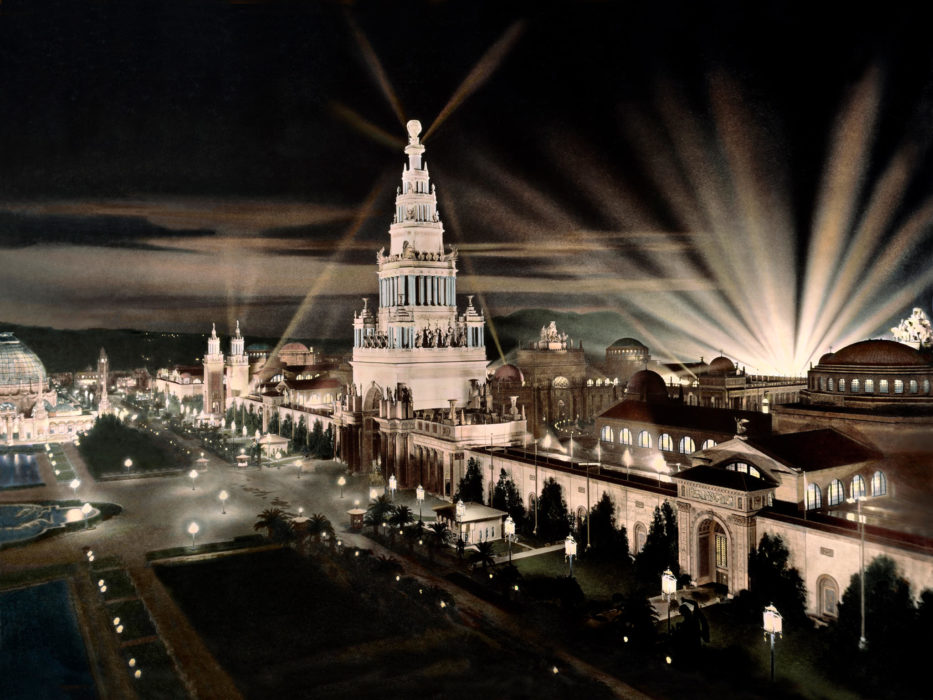ON SEPTEMBER 12, 1912, ‘Abdu’l-Bahá had set out from Buffalo on the longest overland trip of his life — a distance farther than the perilous trek he had taken with his family when he was eight years old, in the dead of winter, without proper clothing, over the freezing mountains of Iran to Baghdad; farther than the voyage of his father’s second exile from Baghdad to Constantinople in 1863. On that trip he had served the exiles at night and galloped ahead of the caravans to steal moments of sleep by day: dismounting, laying down, and resting his head on the neck of his horse.
Here in America his horse was made of iron and he had slept upright in a passenger car while his train skirted the southernmost Great Lakes, whisked across the wheatfields of Iowa and Nebraska, traversed the Rocky Mountains of Colorado, the salt flats of Utah, and the desert plains of Nevada, and finally arrived, in the middle of the night on October 3, on the shore of the opposite sea.
‘Abdu’l-Bahá hadn’t even planned to travel to the Golden State: it was too far and he had pressing business back in Palestine. But a campaign of letters from his friends in San Francisco and Los Angeles had changed his mind. Now, on the evening of Thursday, October 24, 1912, as he said goodbye to friends at his rented house at 1815 California Street in Pacific Heights, he could look back to three of the most eventful weeks of his entire trip through America.

At Stanford University on October 8, ‘Abdu’l-Bahá had argued for a scientific basis for international peace. At Temple Emanu-El, San Francisco’s largest Reform Jewish congregation, he challenged his hearers to make interfaith unity a reality by accepting the founders of other religions. At a Japanese church in Oakland he stood up for the ingenuity and progress of the Japanese people, who would be tossed into internment camps less than thirty years later. “Any kind of prejudice is destructive to the body politic,” he told them.
Whereas in Boston and at Green Acre ‘Abdu’l-Bahá’s New England audiences had a theoretical bent, in frontier San Francisco practicality ruled the day. Mr. Jackson Stitt Wilson, the socialist Mayor of Berkeley, California, had been one of the first guests to call on ‘Abdu’l-Bahá on California Street, in the afternoon of October 5. They spoke of economics, the rights of farmers, the dangerous impasse between capital and labor in Europe, and Stitt Wilson expressed relief: “The religionists do not give any importance to these matters,” he said, “they laugh at us. How wonderful it is that in the personality of ‘Abdu’l-Bahá these two great powers exist — the spiritual and the practical.” “He will surely unite the East and the West,” Stanford’s president, David Starr Jordan, said, “for he walks the mystic way with practical feet.”
As ‘Abdu’l-Bahá’s train departed the bay area, chugging east on the morning of October 25, 1912, architects in San Francisco were already setting in motion the city’s next great enterprise. The Panama Canal would be completed in 1914, and San Franciscans planned to celebrate. Just nine years after the earthquake had toppled and burned the City by the Bay, it would announce to the world that it had risen again from the ashes.
The grounds of the Panama-Pacific International Exposition, held between February and November, 1915, stretched out along the northern shore of the city between Harbor View and the Presidio. Palaces and courts covered seventy-six city blocks, and at its center stood the Tower of Jewels, a forty-three-story landmark covered by more than 100,000 jewels in colored glass that dangled individually to shimmer and reflect the changing light as the Pacific breezes moved them.
In spite of the Great War that raged in Europe, the Exposition was a resounding success. John D. Barry, a writer from Hearst’s San Francisco Bulletin who had taken note of ‘Abdu’l-Bahá’s pragmatic approach to religion, explained why. “Though the Exposition had been designed to commemorate the services of the United States Army in building the Panama Canal,” he wrote, “it was essentially dedicated to the arts of peace. It would show what the world could do when men and nations co-operated.”







